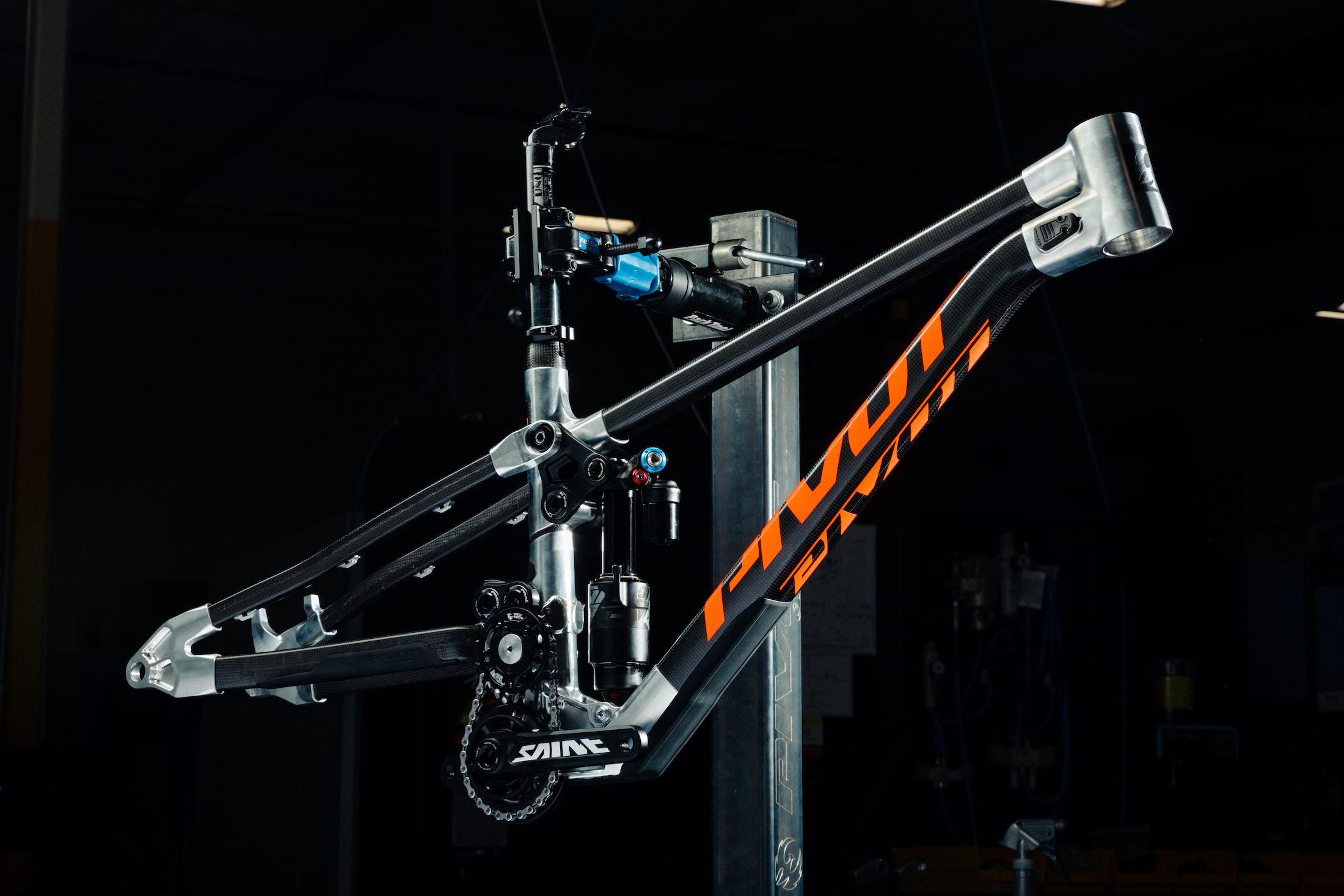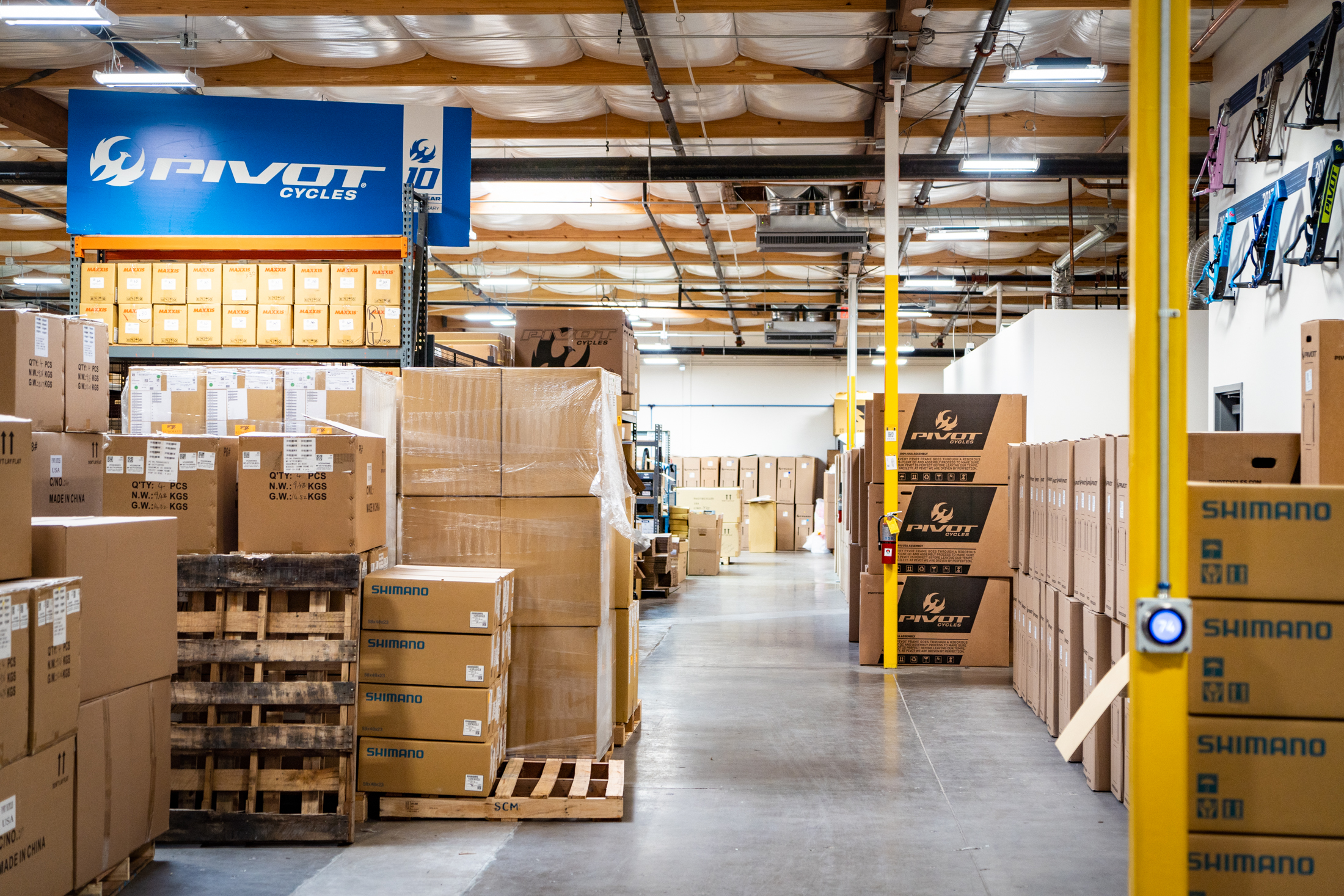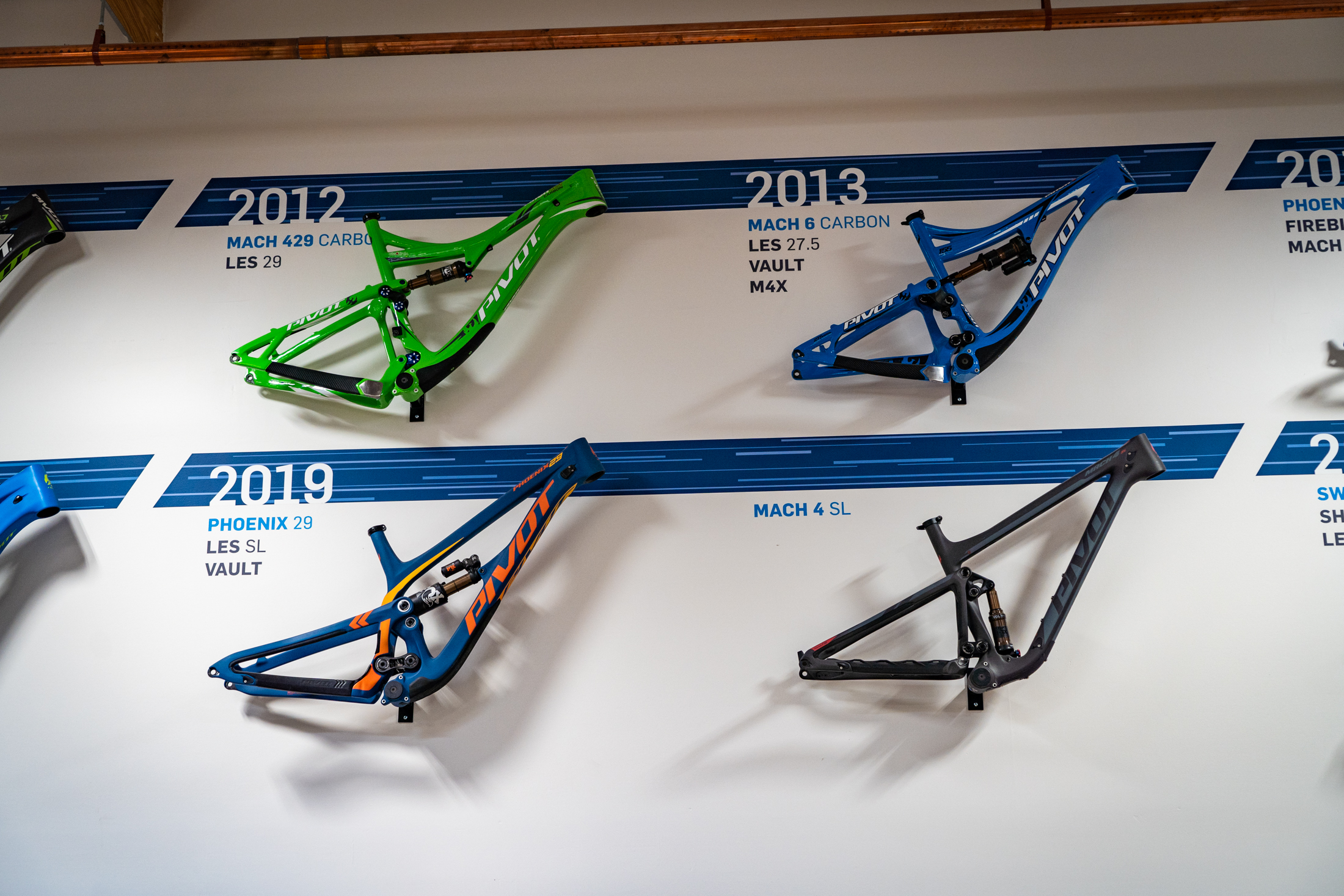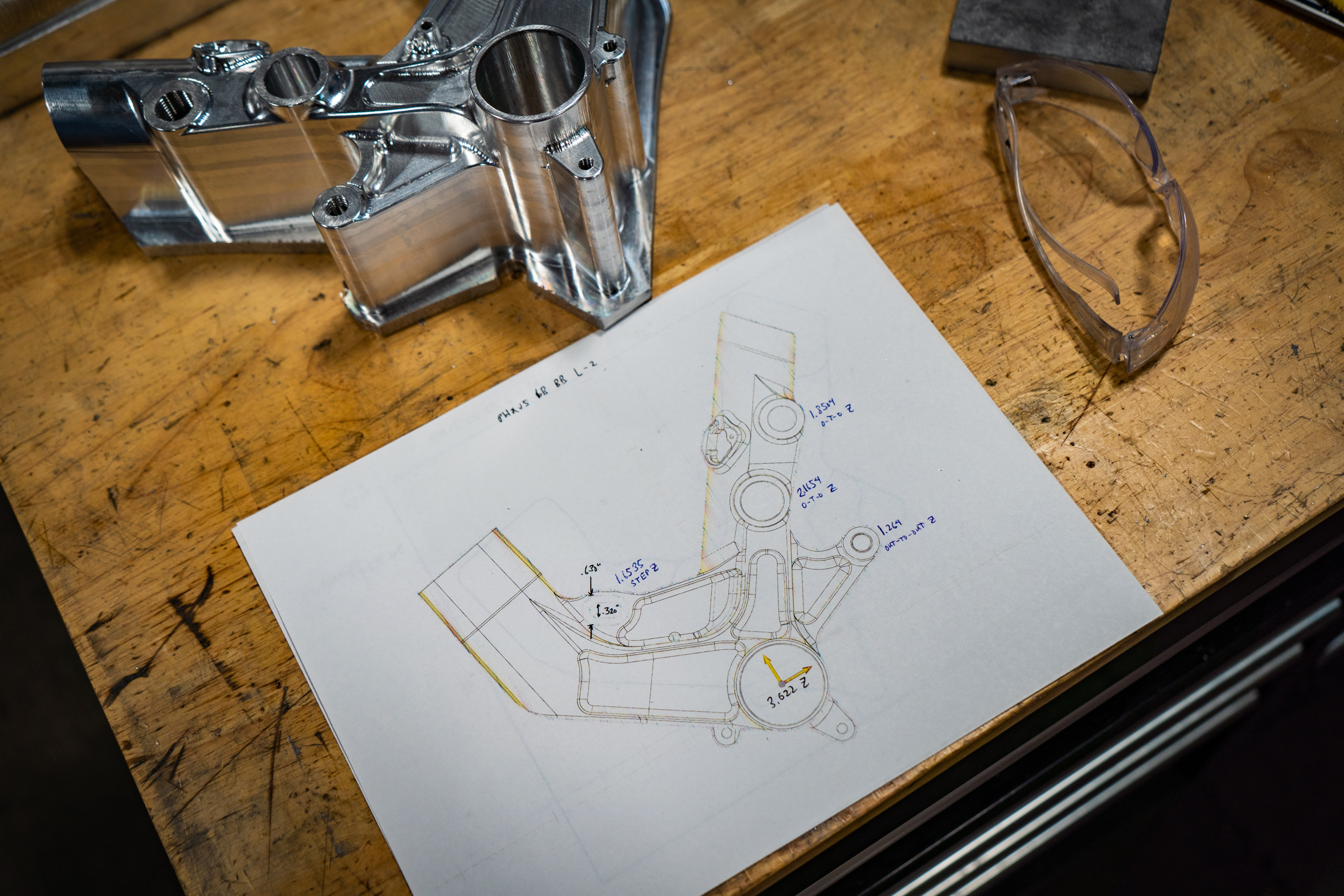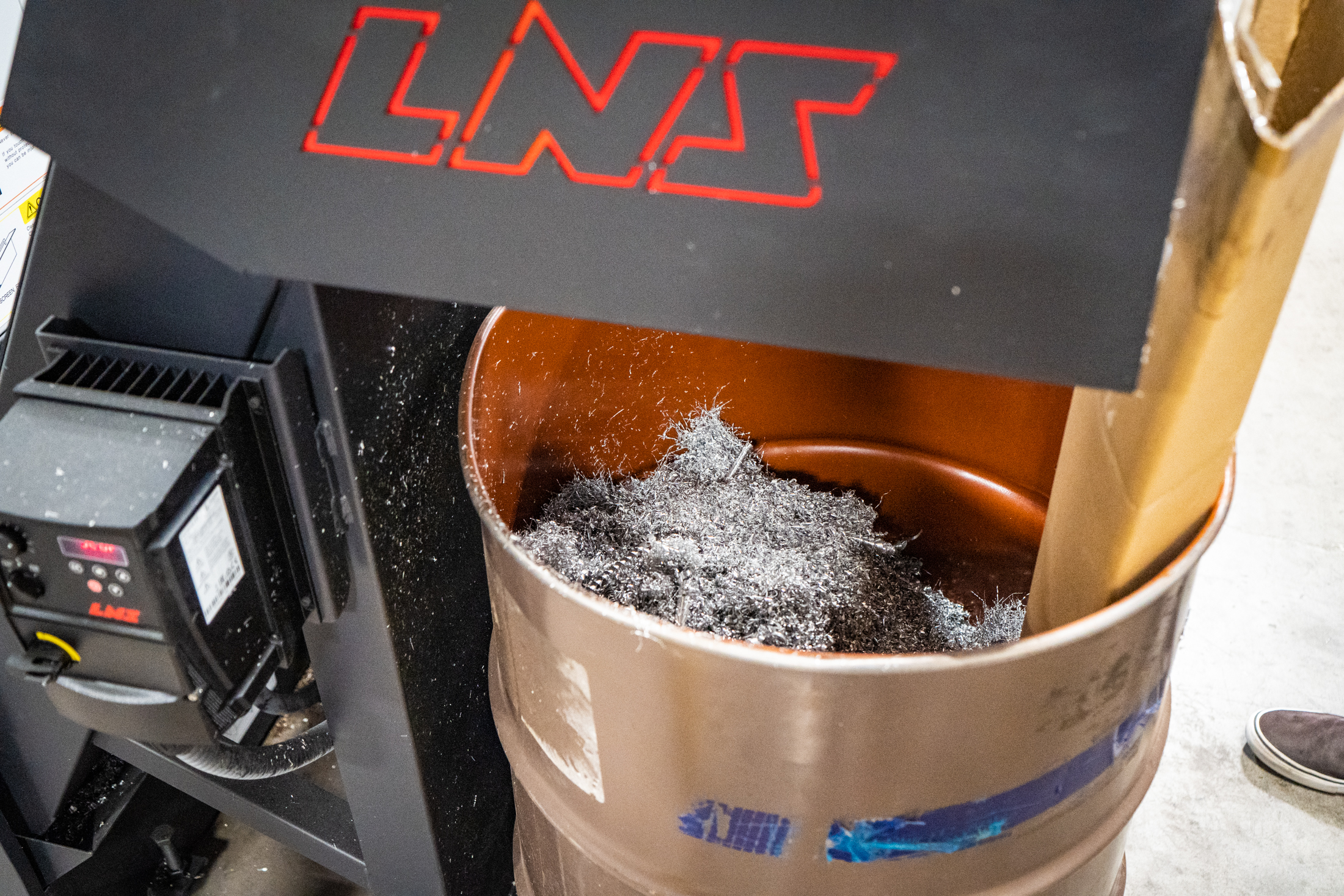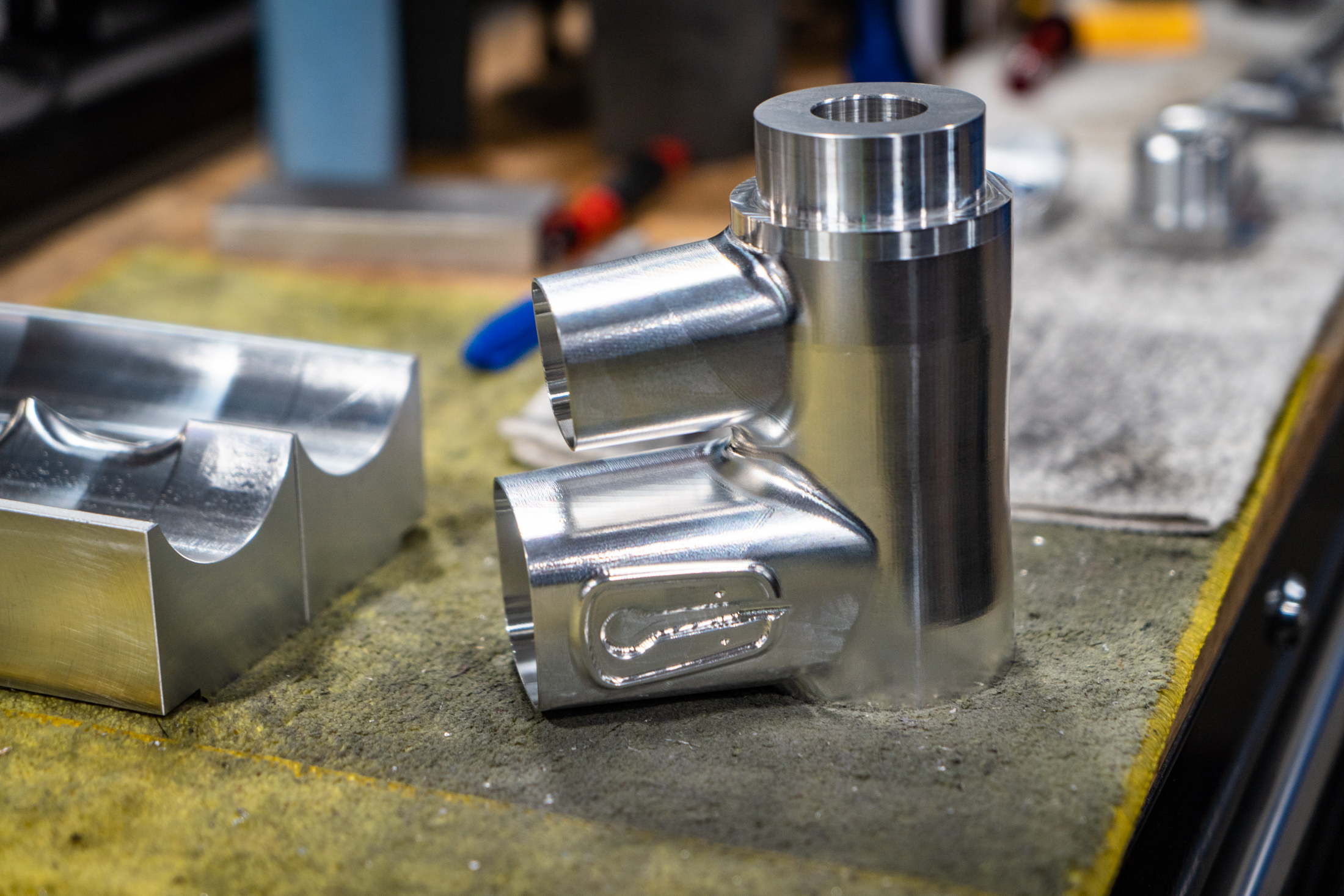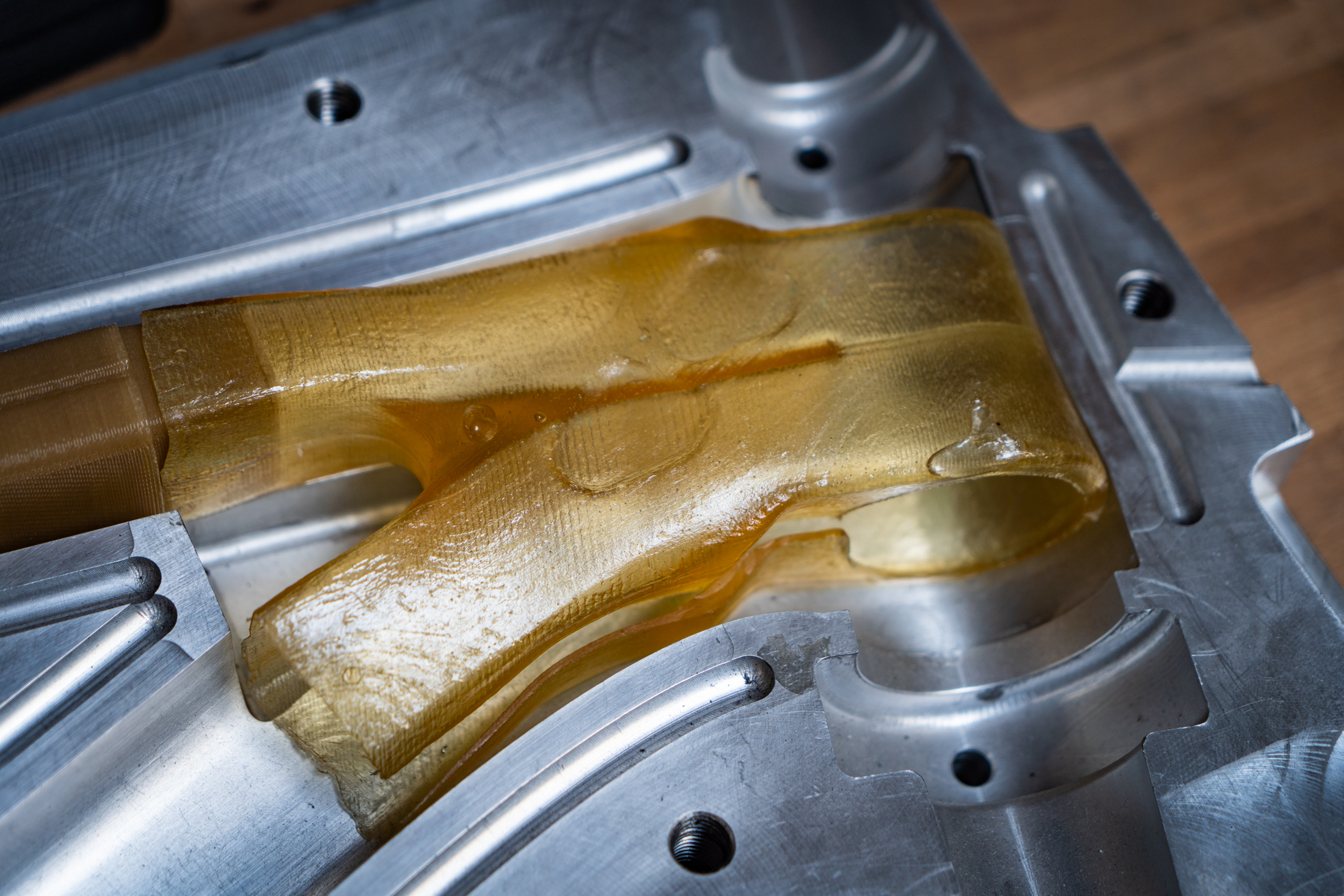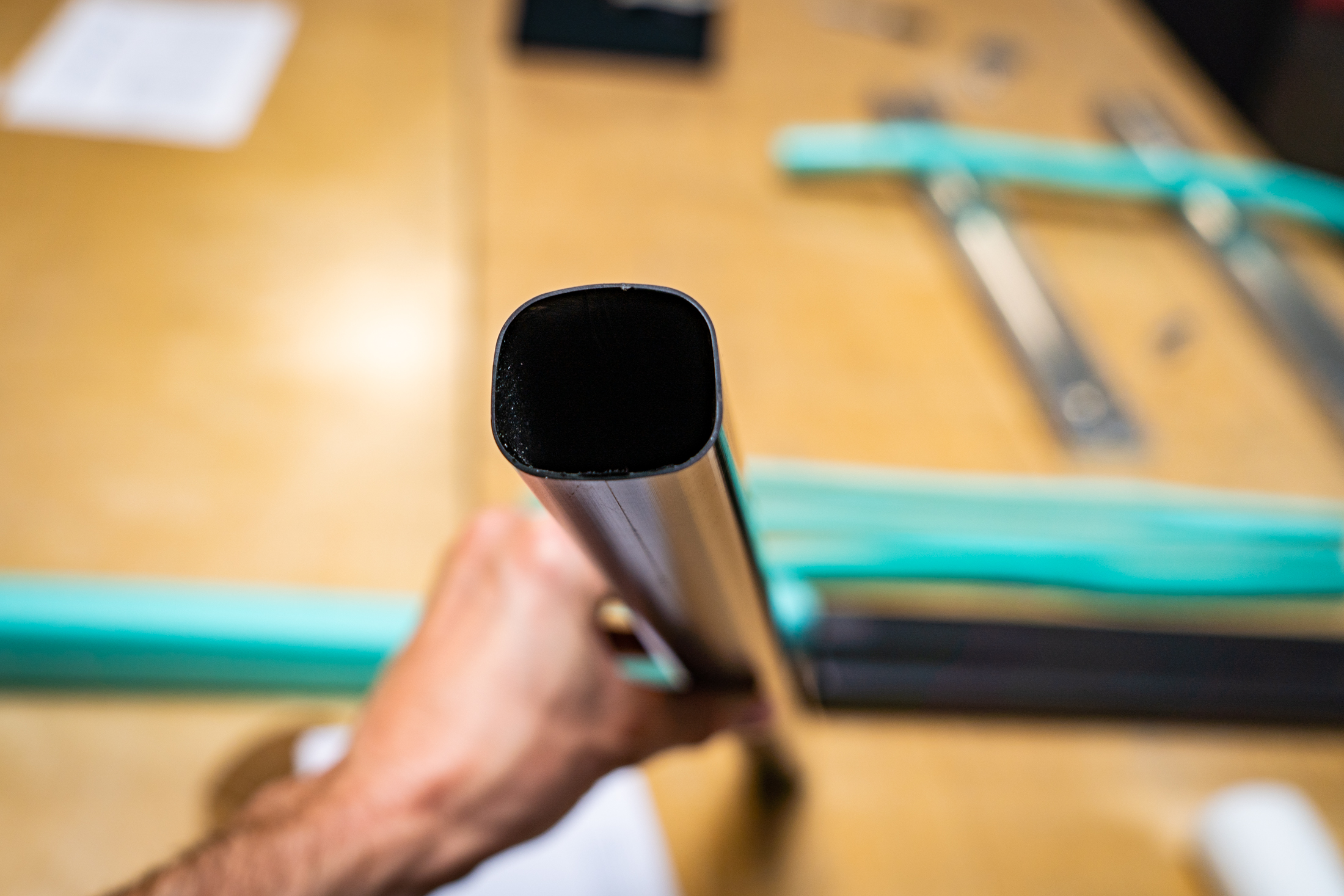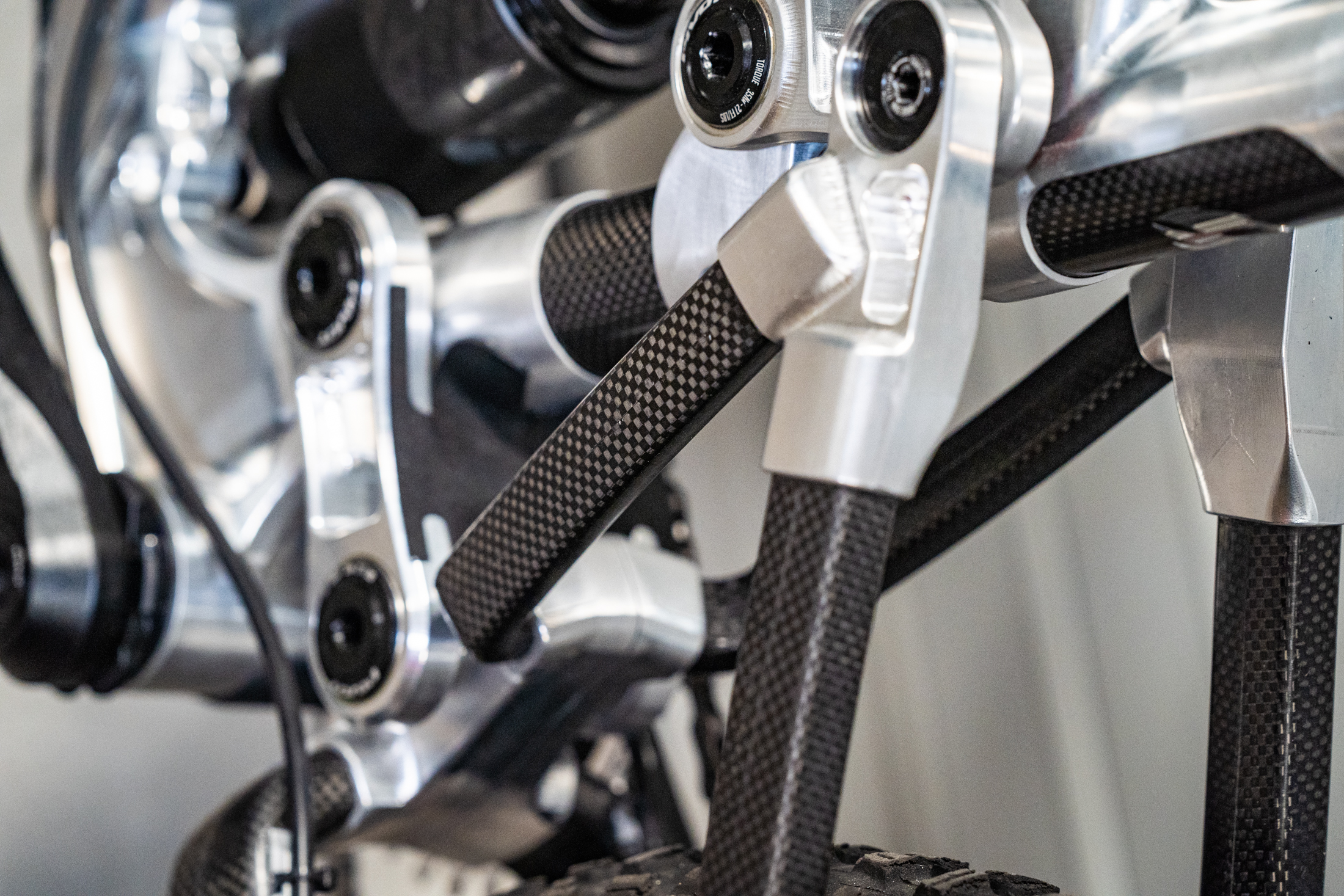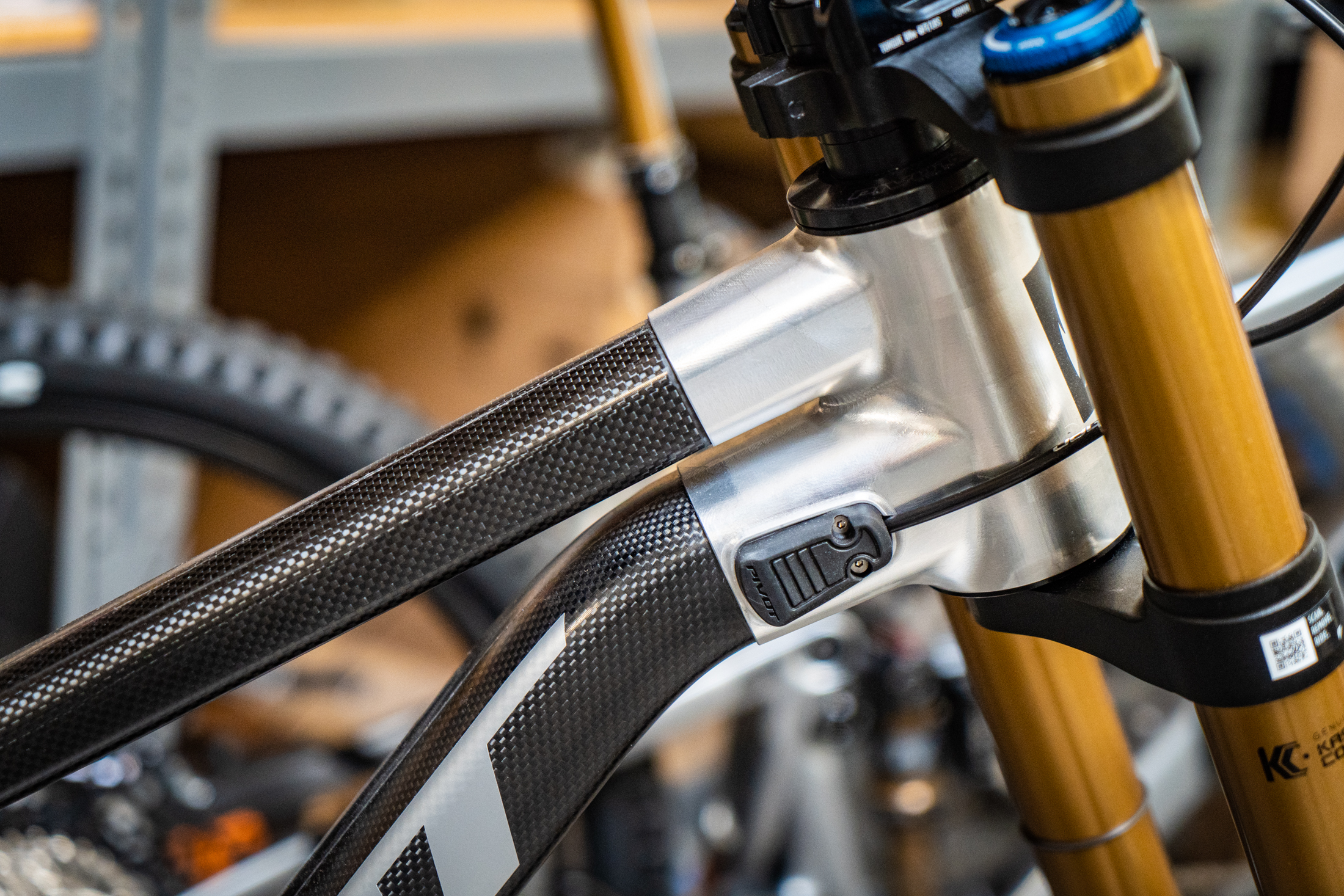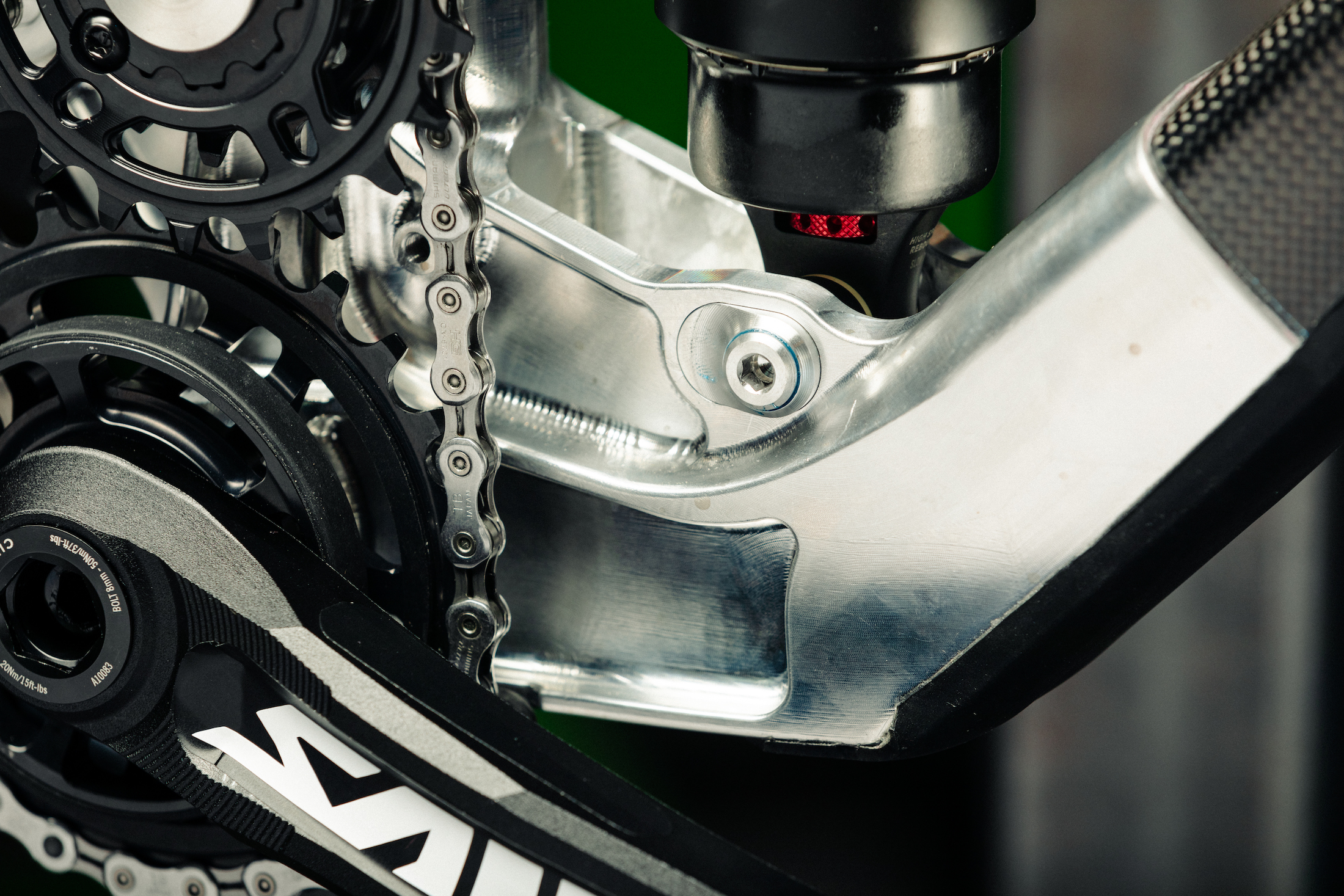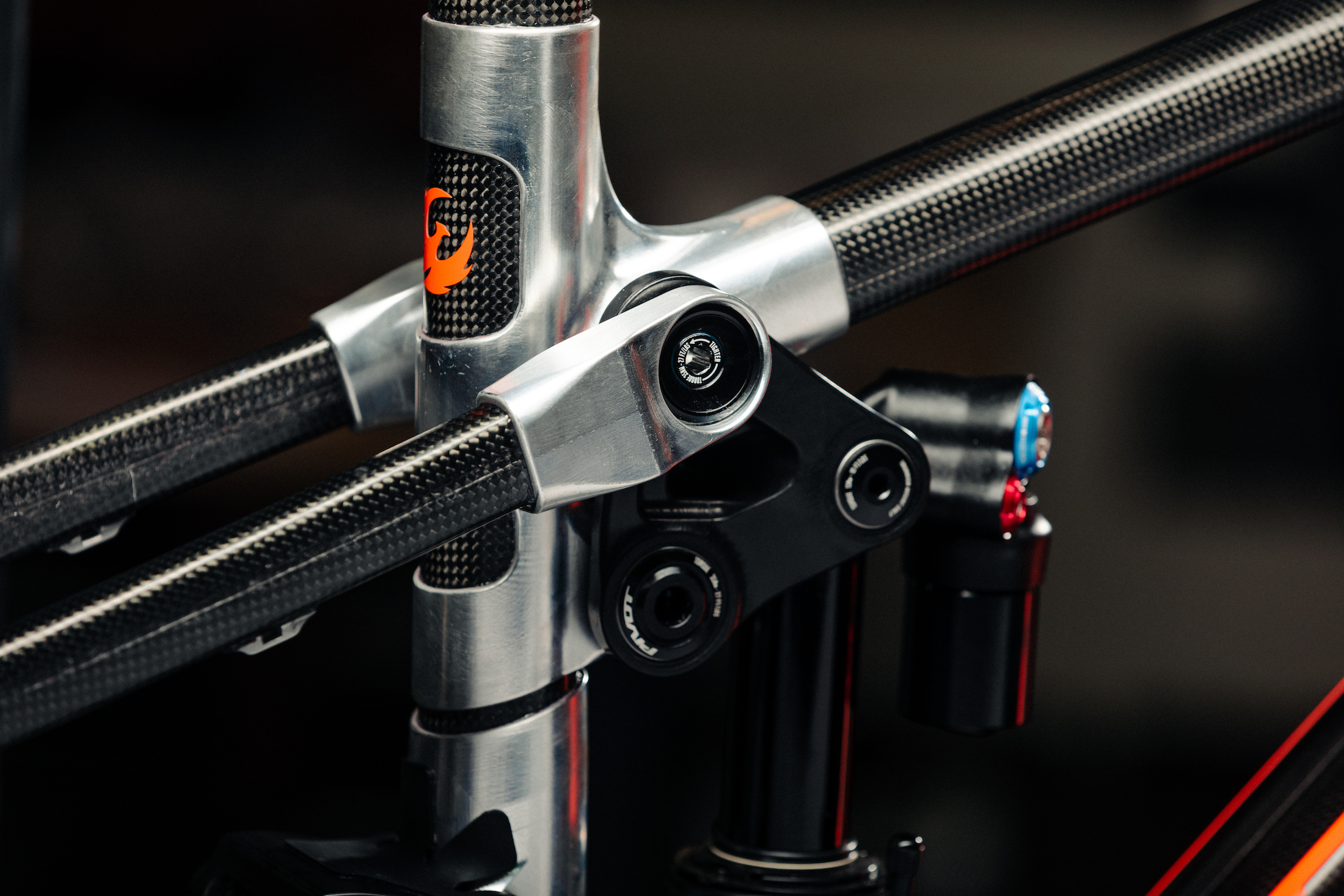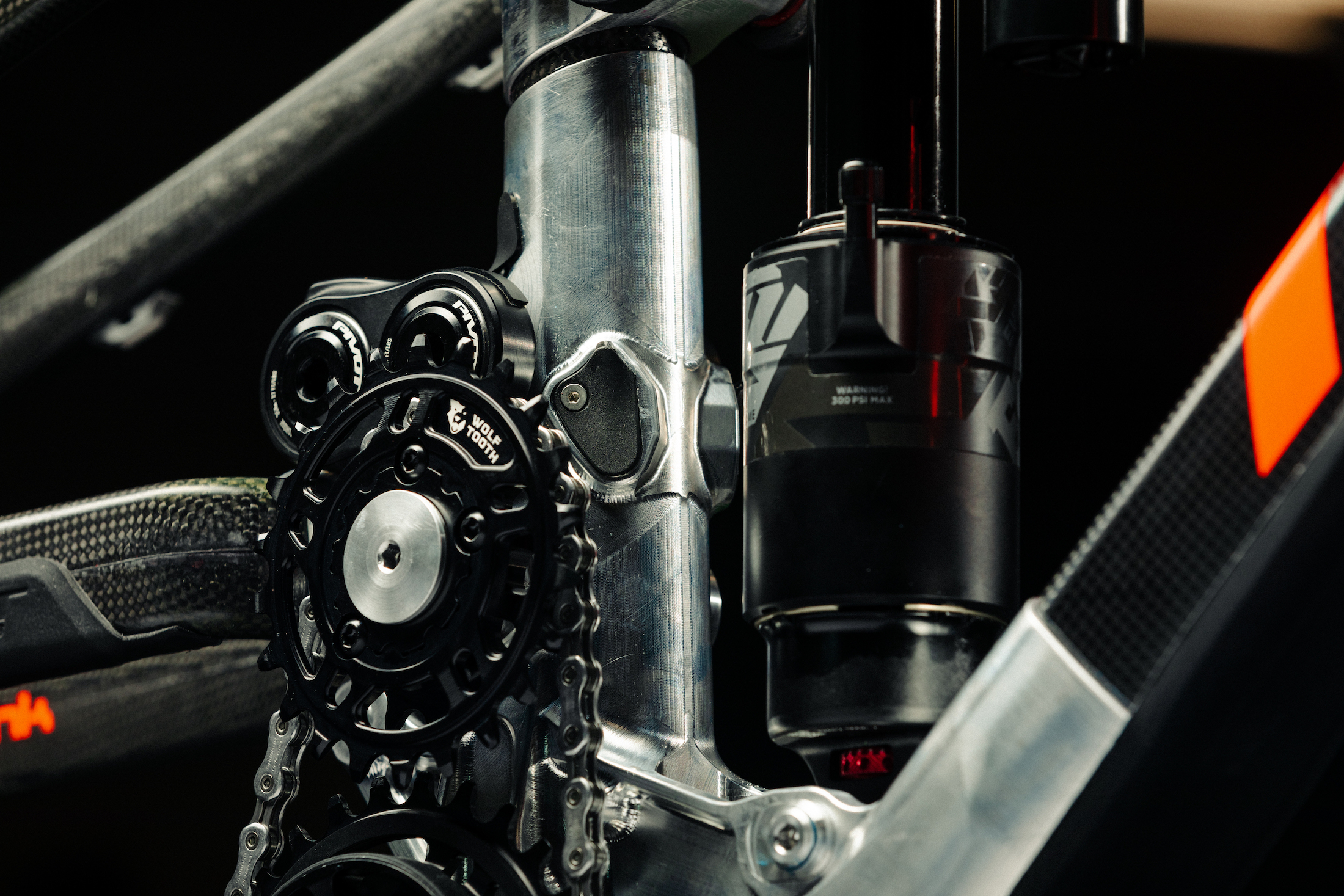Wil chats with Chris Cocalis about the new Pivot DH prototype
During a recent trip to the US to test out the new Pivot Mach 4 SL, I had the opportunity to visit the Pivot Cycles HQ in Arizona. Located in Tempe, just outside of Phoenix, this new building became home to Pivot back in 2020. With a substantially bigger footprint than its previous facility, the expansive industrial site serves as a visual indication of just how rapidly this relatively small and boutique bike brand has grown over the past 23 years.
While Pivot’s production frames are manufactured in Asia, the complete bikes are assembled right here in Arizona. The frames go through a rigorous quality control process, with plenty of lab testing to determine everything is up to Pivot’s strict standards.
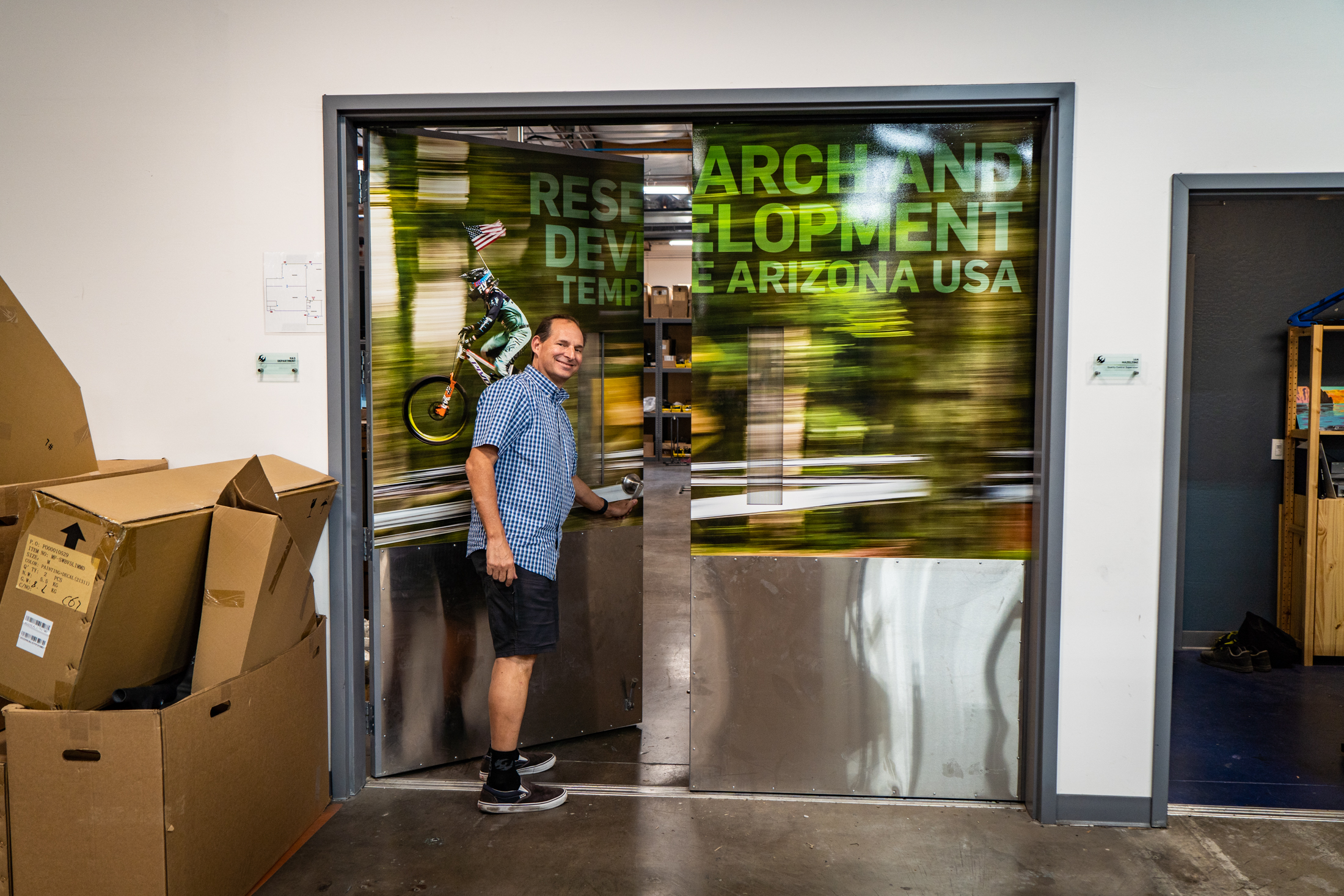
In addition to assembly and quality control, you’ll also find a cordoned-off R&D facility where fresh concepts are imagined, new frame designs are prototyped, and production processes are honed in. This R&D lab has grown both in size and capability since Pivot moved to its new building, and it houses some rather impressive toys, including CNC machines and custom 3D printers.
The R&D team is using this array of machinery to develop rideable prototypes that are bonded together using carbon tubes and CNC-machined alloy lugs. These prototypes are 100% made in-house, and as Pivot continues to refine the processes, the R&D team is now able to build a ready-to-ride frame in just a couple of weeks. This is substantially quicker compared to the previous method of building welded alloy prototype frames, which could take up to three months.
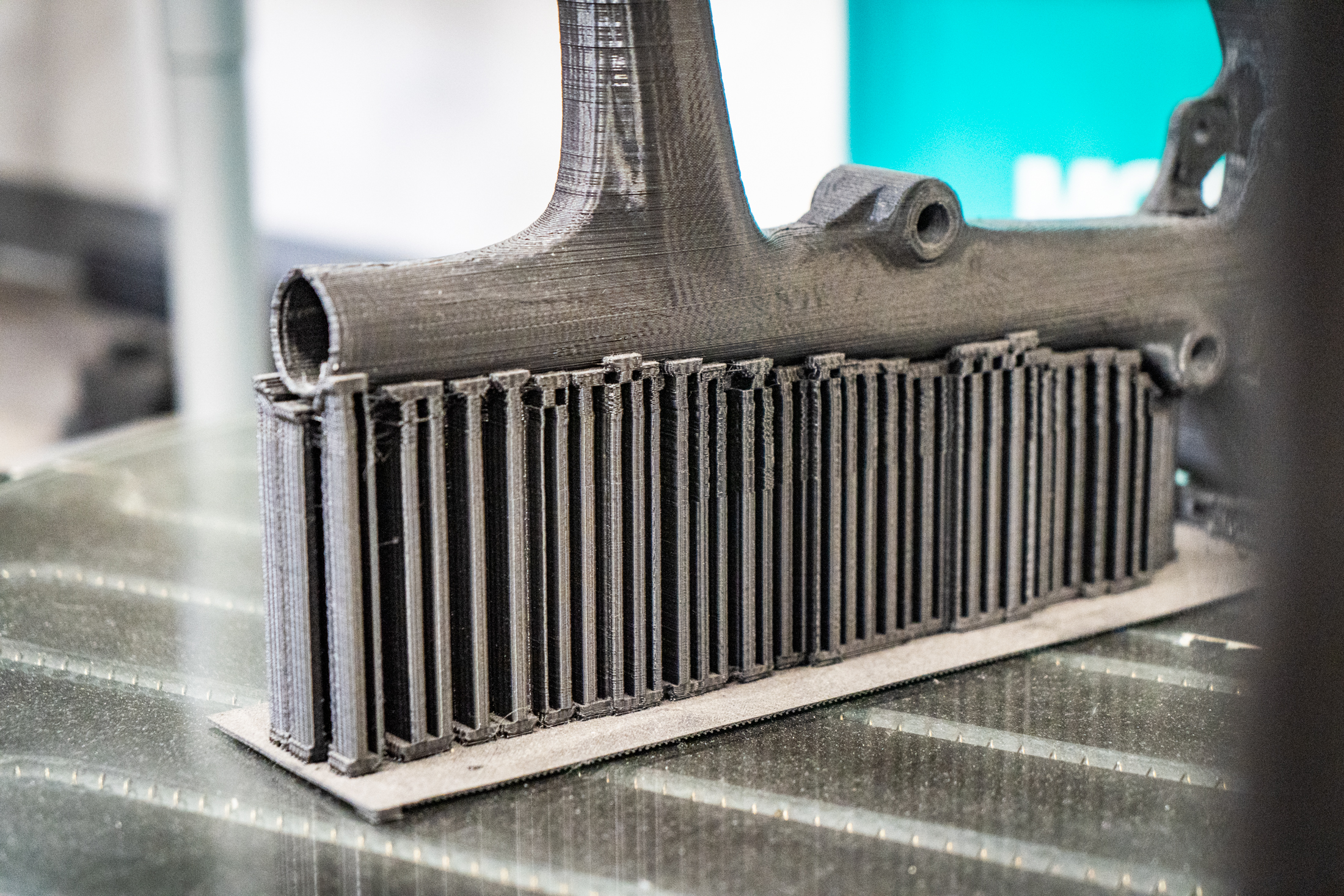
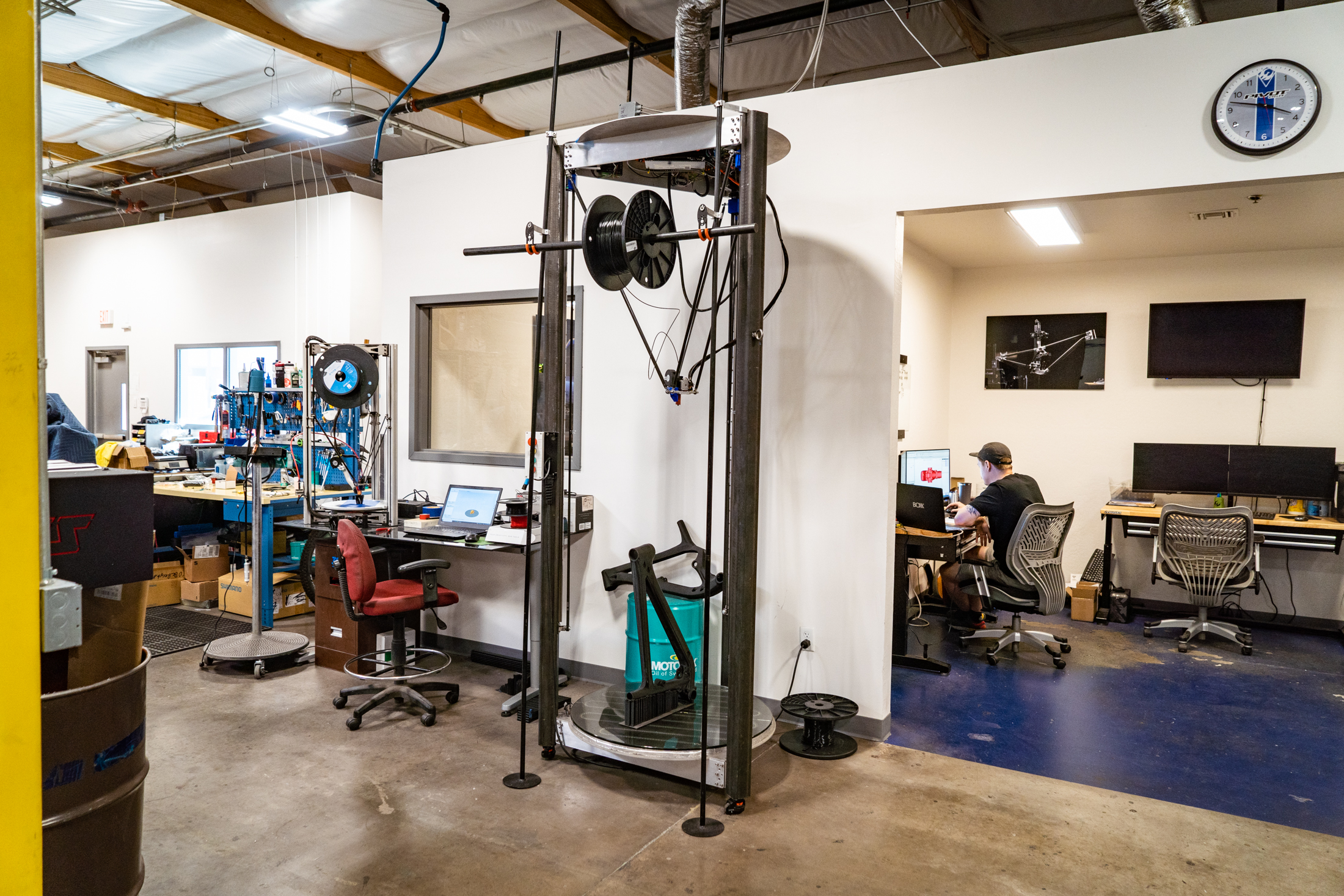
While visiting the new Pivot HQ, I was treated to a guided tour of the new R&D facility by Pivot Cycles’ founder and lead designer, Chris Cocalis. Despite the growth of the company, Cocalis continues to be heavily involved in the development of every single Pivot mountain bike. He’s a fascinating bloke, and he had an incredible amount of insight to impart during our tour.
Here we chat with Chris about the design and fabrication processes, and we take a closer look at that curious new 6-bar prototype downhill bike that’s being raced by Bernard Kerr and the Pivot Factory Racing team at the Lenzerheide World Cup.
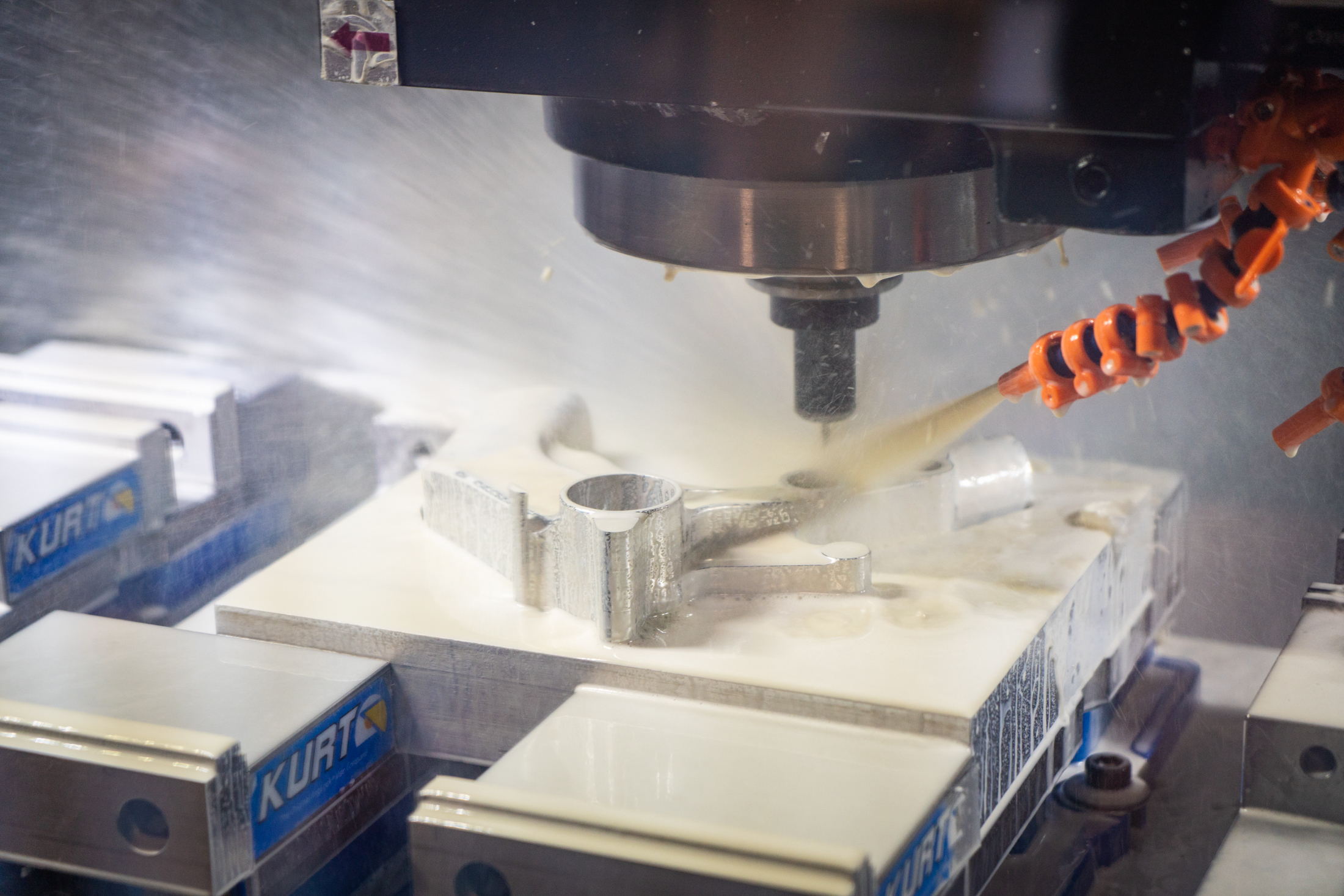
When did you establish the new R&D lab Chris?
We’ve always had an R&D lab, but we expanded the size of the lab when we moved into our new building in 2020.
What’s the purpose of this facility? What can you do in here?
The purpose of our R&D lab is to prototype and develop new products and processes for manufacturing, as well as produce all the high-tolerance QC tooling and check gauges for all our factories and operations globally.
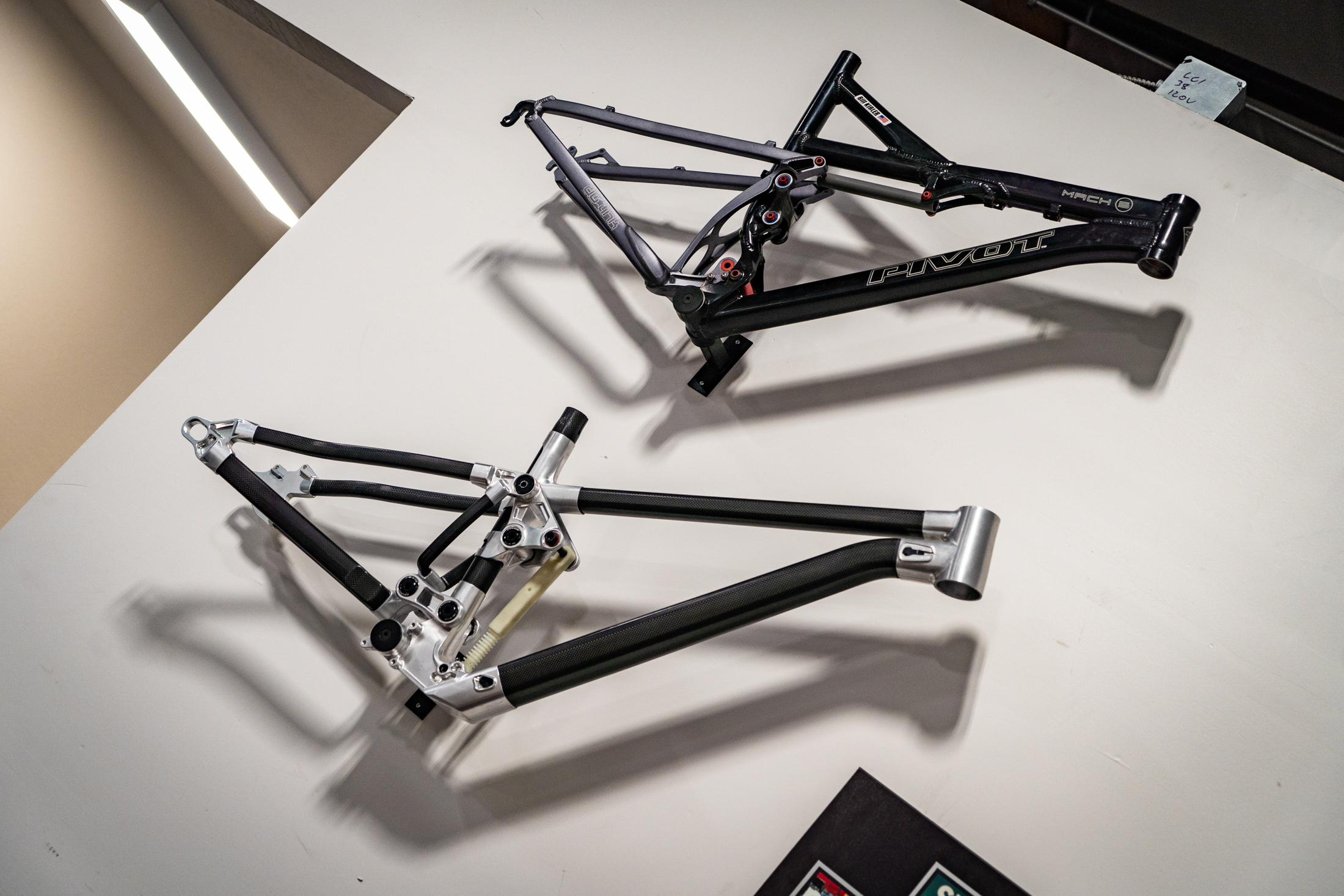
When did the idea come about for producing these carbon tubed/alloy lugged prototype frames?
We began producing carbon tubes with titanium lugs back in my Titus days with our carbon Isogrid and Exogrid frames. However, at Pivot, we began life with aluminium frames and then moved to full monocoque carbon fibre, so lug construction is not something we had revisited until a couple of years ago. Our intention was to move directly to full monocoque carbon fibre construction for our prototyping and we had established that process, but it was really too slow for prototyping and did not offer enough flexibility for making changes and multiple iterations of a new frame design quickly.
Can you tell us a bit about the construction method?
We are moulding all the carbon tubes in-house. We produce all the tooling and then develop the layups for all the tubes. While part of our R&D team is producing the tubes, others are programming the CNC lugs, linkages and hardware for the frames.

What have been some of the challenges of building frames this way?
Just as with the production frames, a lot of time is spent on the front end on the design side. It doesn’t take quite as long as designing a full carbon frame from scratch, but it’s still a large undertaking to design all the parts and program the machines for one-off prototypes. Other than that, it’s just a very exacting process to make each carbon tube with the proper layup and then being very careful with the lug preparation and bonding process. We aren’t sanding or painting these tubes out of the mould so every tube needs to be perfect, and the frame needs to be just as strong as a production frame when it’s finished.
Why produce the carbon tubes in-house?
The simple answer is because we can! However, the reality is that it is the tubes that make each bike what it is. We tune the lay-ups for the proper strength and stiffness for each bike with the end goal of getting the prototype to be as close to the production bike as possible.
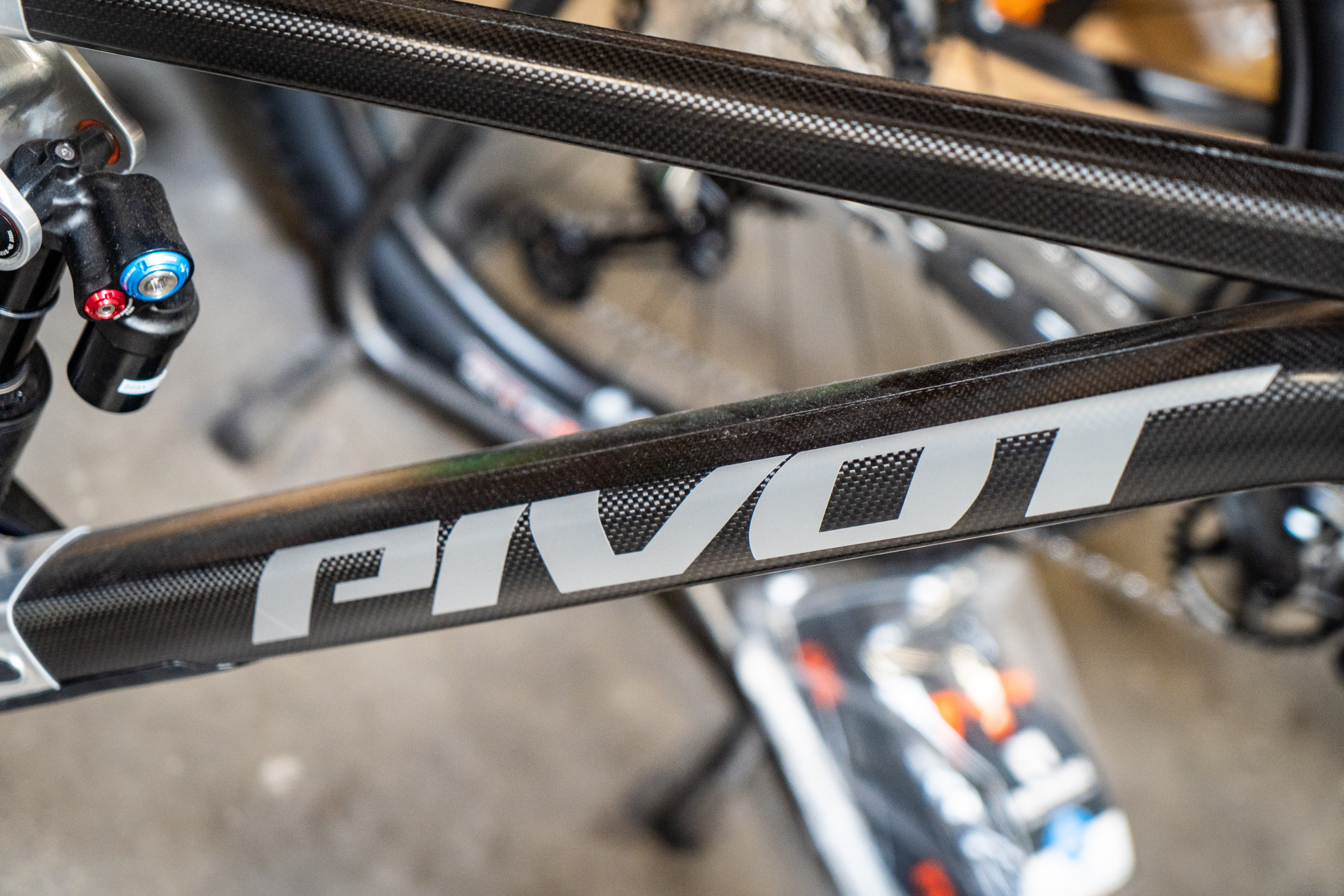
Other modern lugged frames are utilising additive manufacturing to produce their lugs. Why are you using CNC machined parts instead?
We have a LOT of experience with CNC machining and we can control the entire process in-house. You can make lugs with titanium or stainless steel using additive manufacturing. Those materials are still heavier than aluminium, but the lugs can also be thinner in certain areas so it’s really splitting hairs on weight. With the size of the BB area the CNC aluminium part can be lighter.
That said, nothing is off the table. We will continue to develop the process with the goal of being able to go from concept, to prototype, to production even faster. The uniqueness of what we are doing is the production of the carbon. The lugs are just a way to bring it all together.

How long does it take you to build a prototype with the new method vs the old way?
From the time the designs are done, and we are ready to start programming and making tubes, we can have frames ready to go in 3-4 weeks. Making frames in aluminium was not so different on the front end. We still had to machine all the parts, cope the tubes and weld the frame, which was all done in-house. However, the process of going through heat treatment, final frame machining, and then paint, often meant that the process would wind up taking up to 2-3 months.
Are the prototype frames heavier? Flexier? Less durable?
They are a bit heavier due to the amount of aluminium and the overlap of the lugs and the carbon. However, even with the weight, we are beginning to optimise with each iteration of prototyping. Depending on the frame, it is between 0.5-1lb (225-450g) heavier, but I can see us getting that down closer to 0.25-0.375lb (115-170g) on other prototypes that don’t have as much going on as the downhill bike.
Also, by designing the tube sizes, shapes and layups in conjunction with the aluminium lugs, we can match stiffness and ride feel to the production carbon frame. For us, this is the coolest aspect of building these prototypes in this manner.
From a strength standpoint, we have already gone through several rounds of destructive testing, and the latest round of prototypes were slightly stronger than bikes like the current Firebird and Phoenix frames. There’s still a lot of real world testing to do with the team and it is an all new design but from a structural point of view, we are quite happy with what’s been achieved so far.
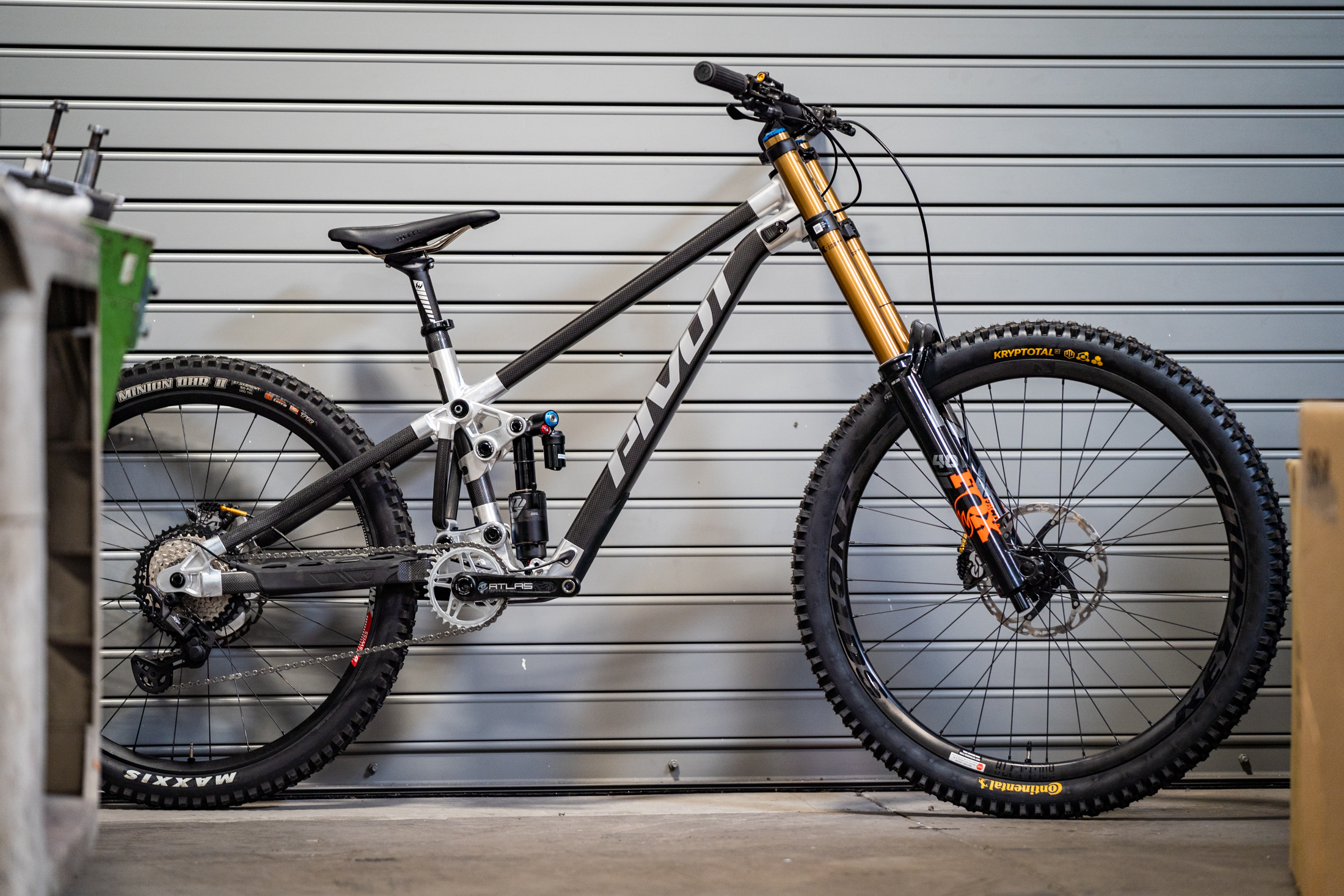
They look absolutely stunning! Is there any plan to build production frames with this kind of method? Or is this strictly for prototyping only?
It would be awesome if this is something we could offer but for now, it’s only for prototyping.
Given how distinctive they look, surely it must be a lot harder to shield them away from prying eyes during testing?
It is a bit harder, but it was also pretty hard hiding the aluminium prototypes given that we only make carbon frames (other than the Point). Right now, we are pretty excited to show it off, but we will probably come up with better ways to hide it in the future.

Regarding the DH prototype, I understand you tested two completely different frame designs with unique suspension platforms. What was the thinking around trying two different designs, and how did these progress throughout testing?
Yes, one is a more traditional dw-link bike. Basically it looks like the downhill version of the Firebird. We raised the dw-link and made it a bit longer, approaching more of a mid-high pivot design without needing to go the pulley wheel route.
The bike we are racing is a bit of a departure from what we are doing now. It’s a 6-bar flex stay design essentially using a radical derivation of the DW6 design with a flex stay. We also wanted to stay away from using a traditional pulley wheel design. The set-up we developed with Dave Weagle uses a much larger upper sprocket and a bit smaller front chainring, which runs drag free and offers really good chainring clearance at full bottom or when navigating bigger obstacles.

Both bikes perform very similar as they are really not so different in how the systems behave overall. However, after Bernard had a lot more time on both of them. Kevin, our head of engineering flew over to New Zealand to do timed test runs on the bikes over a 10-day period. Either bike could set the faster time on any given run but over the course of testing the 6-bar bike was averaging slightly faster times so we are running with that for now.
Commercially speaking, it would have been convenient if the DH team had preferred the dw-link version, given the shared DNA with the rest of the Pivot full suspension range. However, you’ve decided to go with the more radical 6-bar platform. Was this decision made purely from a performance standpoint?
For sure! That’s why we test. It was also great to see how close the two bikes were. However, we lost a World Cup win last year by just a fraction of a second, so making sure we give Bernard and the team every advantage possible is incredibly important. Also, racing is a mental game as well and the riders just fell in love with the new bike the first time they saw it. If you’re stoked on your bike, that makes a huge difference.
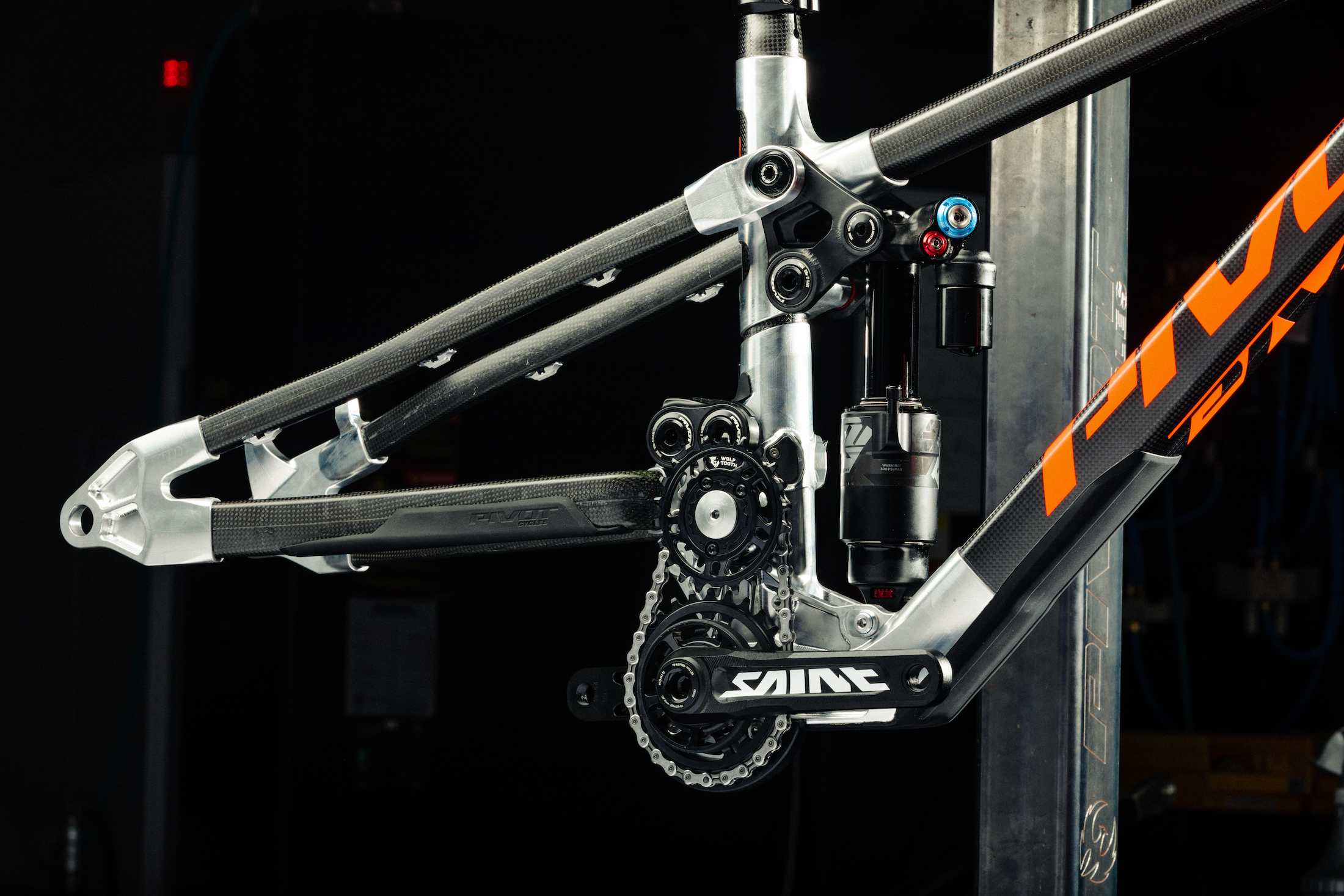

What does the new 6-bar prototype offer over the current Phoenix production downhill bike?
Time will tell as we get actual race time on the new bike. The current bike is insanely good. Bernard had the best season of his career last year on the current bike, and Jenna won the Junior World Championships on the bike as well as winning the Crankworx DH just a couple of weeks ago. It’s a race proven and World Championship proven bike that is 100% dialled in. As with anything, It will take some time to tune in the new one. The bike Bernard is racing at Lenzerheide is actually the 2nd generation prototype because we already learned quite a bit in the off-season and will continue to develop the bike as we go.
Are there plans to test this unique 6-bar platform in shorter travel applications? Would it translate to an e-MTB?
At this point, the design is really best for downhill applications as we aren’t after the same pedalling efficiency required for bikes that also need to be pedalled up the hill. The Phoenix needs to go really fast downhill, so everything we are doing is focused on that goal. Either way, we do learn a lot from these development projects, and it allows us to test the limits and hopefully come away with information that has long term benefits across the Pivot line.
Flow’s Take
We’re absolutely fascinated by these prototype downhill race bikes that Cocalis and the team at Pivot have been busy developing and refining over the last few months. It’s impressive to see so much enthusiasm to produce these prototypes in-house, and there’s clearly a lot of attention being paid to manufacturing them to a very high level.
We’ll watch on with interest to see how the new 6-bar prototype performs under Bernard Kerr and the Pivot Factory Racing team, and we look forward to seeing what lessons can be learned from the race track. There are some interesting concepts being tested here that aren’t strictly limited to downhill racing, and we’re eager to see just how far Pivot will push those ideas. Stay tuned!
